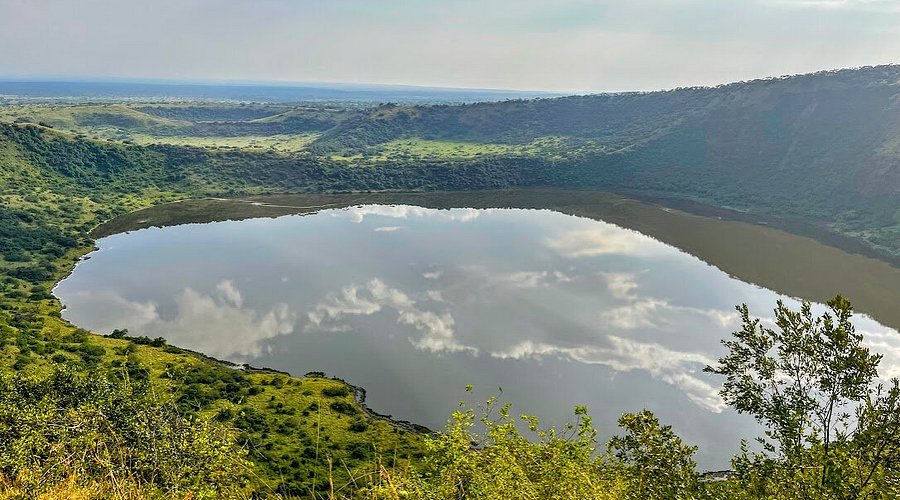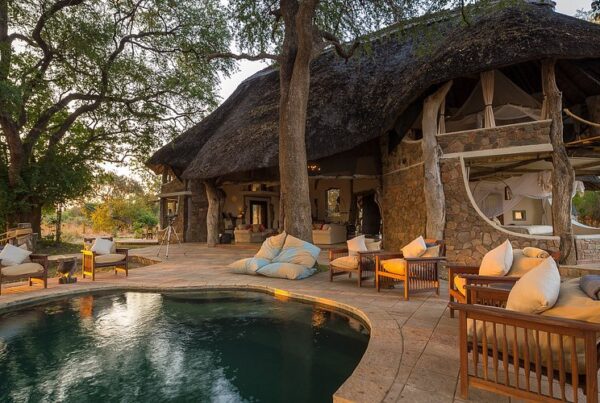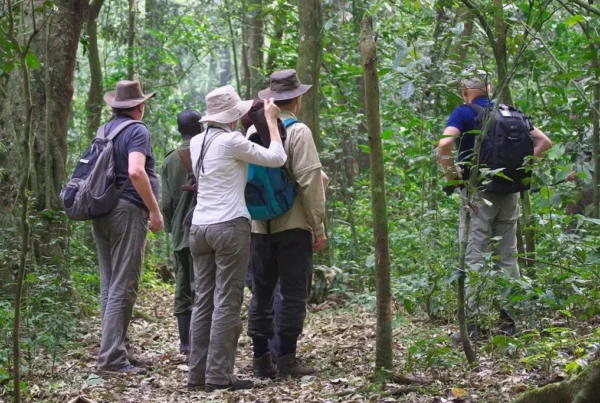Exploring Crater Lakes in Queen Elizabeth National Park
Nature’s Masterpieces Carved in Time
In the heart of western Uganda, where rolling savannahs converge with towering mountain ranges, a series of otherworldly landscapes whisper the stories of the earth’s turbulent past. Among the many wonders of Queen Elizabeth National Park, none inspire the imagination as profoundly as the crater lakes. These water-filled calderas, born of volcanic fury millions of years ago, now stand as serene jewels scattered across the land, shimmering with mystery and life.
For the traveler drawn into the park’s wilderness, exploring the crater lakes is more than an excursion; it is an immersion into the intersection of geology, ecology, and human culture. Their beauty captures the eyes, but their history captivates the mind, offering a glimpse into forces that shaped Uganda’s landscapes and continue to sustain its biodiversity. Whether viewed from sweeping escarpments or approached through winding tracks, these lakes appear as sanctuaries of reflection, tranquility, and discovery.
To step into their presence is to experience Queen Elizabeth National Park not only as a realm of animals and plains but also as a geological gallery where the artistry of time is etched into every curve of water and ridge of rock. This article delves into the story of these crater lakes, their ecological importance, their cultural resonance, and the role they play in enriching the safari experience within the park.
The Geological Origins of the Crater Lakes
The crater lakes of Queen Elizabeth National Park are legacies of ancient volcanic activity. Millions of years ago, tectonic forces along the Albertine Rift Valley fractured the earth’s crust, triggering volcanic eruptions that reshaped the landscape. Explosions of steam and magma left behind enormous depressions, which over time filled with rainwater and underground springs, becoming the crater lakes seen today.
The park is dotted with more than ten significant craters, particularly concentrated along the Ndali-Kasenda Crater Field near Kibale Forest and the Katwe Explosion Craters within the park itself. These craters vary in size, depth, and ecological character. Some hold permanent lakes with shimmering waters, while others remain as dry depressions, their walls carpeted in savannah grasses. Each one carries its own geological signature, but together they form a dramatic testament to the power of the earth beneath the Rift Valley.
The most famous among them are the Katwe Craters, where human interaction with these formations has been continuous for centuries due to the presence of salt. These saltwater lakes have not only shaped the ecological balance of the park but have also provided livelihoods for surrounding communities. Thus, the crater lakes represent more than natural wonders; they are living archives of the land’s volcanic legacy and its influence on human survival.
The Katwe Explosion Craters: A Scenic Wonder
Of all the crater lakes in Queen Elizabeth National Park, the Katwe Explosion Craters hold a special place. They are located along a fifteen-mile scenic drive that meanders through some of the park’s most dramatic landscapes. Rising over 1,200 meters above sea level, these craters command breathtaking views of the surrounding savannah, the Kazinga Channel, and even the distant peaks of the Rwenzori Mountains when skies are clear.
Formed around 8,000 to 10,000 years ago, the Katwe Craters reveal a terrain scarred by volcanic activity yet softened by time. Some craters are filled with water, their tranquil surfaces mirroring the skies, while others lie dry, their slopes blanketed with grasses that attract antelopes and elephants. The contrast between still water and rugged rims creates a surreal atmosphere, reminding visitors that these tranquil pools were once cauldrons of fire and smoke.
Driving through this region offers more than geological marvels. The area is also a haven for wildlife. Buffalo, warthogs, and elephants graze along the crater rims, while raptors soar on thermal winds above. The craters themselves form micro-habitats, supporting unique plant species that thrive in their mineral-rich soils. For travelers, the Katwe Explosion Craters are not merely scenic; they are living laboratories where geology and biology meet in harmony.
Lake Katwe: A Lake of Salt and Survival
Among the Katwe Craters, Lake Katwe stands out as both a natural wonder and a cultural landmark. Unlike many other crater lakes filled with freshwater, Lake Katwe contains highly saline waters that have been harvested for centuries. Salt extraction here has sustained communities since the fourteenth century, turning the lake into one of the most important economic resources in the region.
Traditional salt mining at Lake Katwe remains a fascinating cultural practice. Workers carve salt pans along the edges of the lake, leaving shallow ponds where water evaporates under the sun, leaving behind crystalline salt. This salt is collected and traded across Uganda and neighboring countries, linking the lake to centuries of commerce and survival.
The process is arduous and often dangerous, as miners endure harsh conditions and exposure to briny waters. Yet the salt of Lake Katwe continues to symbolize resilience and adaptation, a reminder of how human societies have lived in synergy with the volcanic landscapes of the Albertine Rift. To visit Lake Katwe is to witness not only a geological marvel but also the enduring relationship between people and nature.
Lake Munyanyange: A Haven for Birds
Just beyond Lake Katwe lies Lake Munyanyange, a small crater lake that holds enormous ecological significance. Unlike its saline neighbor, Lake Munyanyange is a seasonal haven for migratory birds, particularly flamingos. Between October and April, flocks of lesser flamingos descend upon its shallow waters, their pink plumage painting the lake in surreal hues.
This phenomenon has transformed Lake Munyanyange into a birdwatcher’s paradise. Alongside flamingos, pelicans, avocets, stilts, and numerous migratory species find refuge here. The presence of such diversity is tied to the lake’s mineral composition and the seasonal abundance of algae and crustaceans that provide food for the birds.
Lake Munyanyange also reflects the delicate balance between conservation and community. It lies close to Katwe town, where human activity constantly presses against ecological boundaries. Yet its continued ability to host migratory birds underscores the resilience of the ecosystem. For those exploring the crater lakes of Queen Elizabeth, Lake Munyanyange offers a window into the intersection of avian migration, ecology, and community life.
The Scenic Beauty of the Ndali-Kasenda Crater Lakes
While the Katwe Craters dominate the park’s volcanic landscape, the Ndali-Kasenda Crater Field, situated on the park’s fringes near Kibale National Park, is equally mesmerizing. This region contains over thirty craters, many filled with sparkling blue-green waters fringed by lush vegetation. These lakes are surrounded by rolling hills, banana plantations, and small villages, creating a mosaic of natural beauty and cultural life.
Each lake in the Ndali-Kasenda field possesses its own character. Some are deep and steep-walled, resembling giant bowls, while others are shallow with gently sloping shores. Lakes such as Nyinambuga, Nyabikere, and Nkuruba have become notable attractions, offering serene environments for exploration, hiking, and photography. Their crystal-clear waters and verdant surroundings make them appear almost surreal, as if untouched by time.
Though located slightly beyond Queen Elizabeth National Park’s boundaries, the Ndali-Kasenda Crater Lakes complement the park’s offerings, providing visitors with opportunities to immerse themselves in landscapes where geology, agriculture, and rural culture meet. They serve as reminders that the volcanic story of the region extends far beyond the park’s borders.
Ecological Importance of the Crater Lakes
Beyond their visual beauty, the crater lakes of Queen Elizabeth National Park play crucial ecological roles. They act as freshwater reservoirs that sustain wildlife, particularly during dry seasons when surface water elsewhere becomes scarce. Herds of elephants and buffalo often descend to their shores, while antelopes and primates feed on vegetation thriving along the fertile rims.
The lakes also serve as microclimates within the larger savannah ecosystem. Their moist environments support unique flora, including medicinal plants used by local communities. Amphibians and insects thrive in their waters, creating food chains that sustain birds and mammals. In this way, the crater lakes are not isolated features but integral components of the park’s ecological web.
Salt lakes like Katwe add another dimension to this ecology. Though their waters cannot support most life, their mineral deposits attract specialized organisms, which in turn feed flocks of flamingos and other bird species. Thus, even the harshest of the crater environments contribute to the park’s biodiversity.
The Cultural Resonance of Crater Lakes
For communities surrounding Queen Elizabeth National Park, crater lakes are more than natural features; they are woven into myths, rituals, and livelihoods. Local folklore often describes the lakes as sacred, formed by supernatural forces or inhabited by spirits. Certain lakes are considered taboo for fishing or swimming, a cultural safeguard that has inadvertently contributed to conservation.
Salt from Lake Katwe, as mentioned, has shaped economies for centuries, but even freshwater crater lakes hold cultural importance. Rituals for rainmaking, healing, or blessings have been conducted along their shores. Oral histories passed through generations link these lakes to ancestry and identity, binding people to the land.
Thus, to explore the crater lakes is to encounter not only geological and ecological marvels but also the cultural soul of the region. Every ripple of water carries stories of survival, spirituality, and belonging.
Experiencing the Crater Lakes as a Visitor
For travelers, the crater lakes offer some of the most breathtaking experiences within Queen Elizabeth National Park. Scenic drives around the Katwe Craters provide elevated views that stretch across savannah plains to the misty silhouettes of the Rwenzori Mountains. Hiking trails around certain lakes allow for intimate encounters with nature, while cultural tours to salt mining sites reveal human resilience.
Photographers find endless inspiration here, with craters offering contrasting moods under shifting light. Dawn bathes them in golden hues, while evening paints them with crimson reflections. For birdwatchers, lakes like Munyanyange provide unrivaled opportunities to witness migratory spectacles. And for those seeking tranquility, the remote lakes of the Ndali-Kasenda field provide serene retreats far from safari crowds.
Visiting the crater lakes is therefore not merely about observation but about connection—connection with geology, with wildlife, and with human history. It is this layering of experiences that makes them unforgettable.
The Timeless Allure of the Crater Lakes
The crater lakes of Queen Elizabeth National Park are more than remnants of volcanic upheaval; they are living landscapes where time, life, and culture converge. They stand as natural masterpieces that tell stories of fiery origins, ecological balance, and human resilience. To explore them is to walk in the footsteps of both ancient forces and present communities, where every ridge and ripple echoes with history.
For travelers seeking to immerse themselves in Uganda’s wilderness, these crater lakes represent some of the most profound encounters within Queen Elizabeth National Park. They complement the park’s famed wildlife and savannah drives, offering beauty, depth, and tranquility. Their allure lies not only in what is seen but also in what is felt—the quiet majesty of landscapes shaped by fire and softened by time.
For an experience that unites the geological, ecological, and cultural richness of Queen Elizabeth National Park, it is highly recommended that Africa tours and safaris be booked through WildHorn Africa. With unmatched expertise and dedication, WildHorn Africa ensures that the journey to these crater lakes, and indeed through the entire park, is not simply a trip but a memory carried for a lifetime.





 WildHorn Africa – Authentic and unforgettable tours across Africa, guided by local experts who know the land, wildlife, and culture best.
WildHorn Africa – Authentic and unforgettable tours across Africa, guided by local experts who know the land, wildlife, and culture best.


